Arashiyama is a popular tourist spot in western Kyoto and made for a nice and easy day trip from our downtown hotel. Our two main objectives of going there were to ride the Sagano Romantic Train and to take a walk through the famous bamboo forest.
Sagano Romantic Train
The Sagano Romantic Train only has four stops, with Torokko Kameoka and Torokko Saga being the two end stations. The entire journey lasts 25 minutes and offers scenic mountain, river and forest views. We decided to start at Torokko Kameoka, take a one-way trip to Torokko Saga and then walk to the bamboo forest.
Getting to Torokko Kameoka station from our hotel took about an hour and involved a couple of train transfers. We alighted at JR Umahori station and followed Google Map walking directions to Torokko Kameoka. There’ll probably be quite a few people taking the same route, so no harm following the crowd.
The station itself is a fairly nondescript brown blocky building, but you’ll see numerous cute tanuki statues of varying sizes along the tracks. Very Japanese and very kawaii.


The most popular carriage is number five, named “The Rich”. It has a glass roof and no windows, provides the best views and therefore sells out very quickly. We didn’t reserve in advance and tried our luck at the ticket office.
Unsurprisingly, carriage five was completely sold out, but we did manage to get seats in carriage four. It didn’t take long before the vintage-looking train with wooden seats arrived.




It was a cool and breezy autumn morning, and taking the slow train was a good way to admire the beautiful and natural Sagano landscape.






When we alighted at Torokko Saga, there was a train exhibition in the station. Not sure why the grand piano was there though.
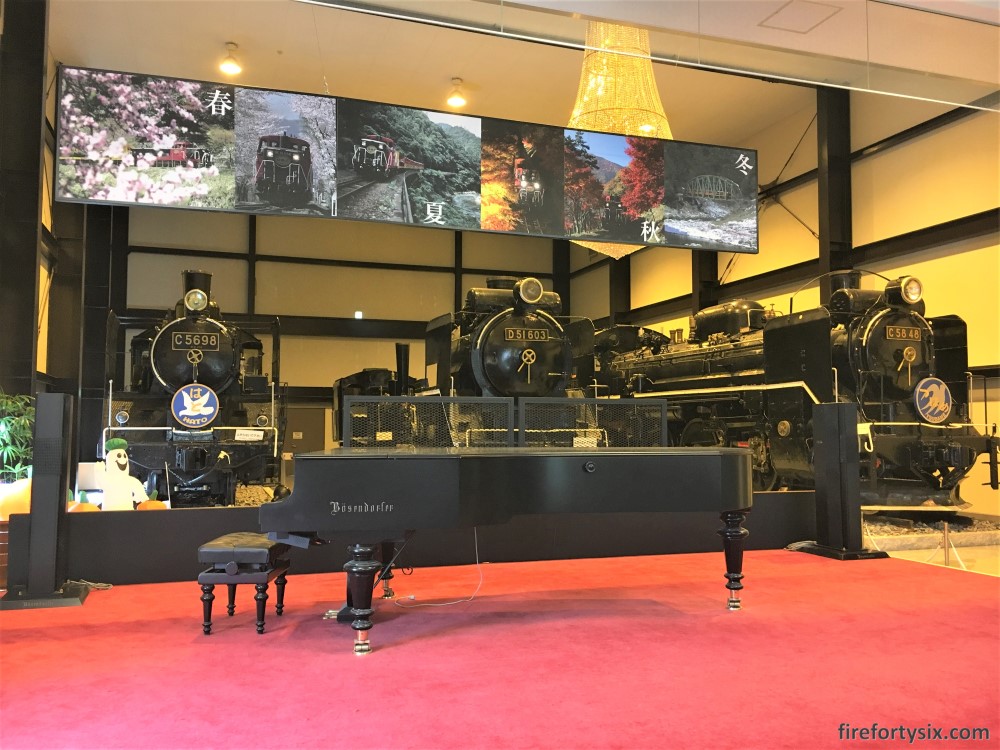
Bamboo Forest
The walk to the bamboo forest took about ten minutes, passing through what looked like a residential area. Again, you can’t go wrong if you follow the crowd, which gets bigger as you get nearer.
Typhoon Jebi had swept through Japan the month earlier and the Kansai region was hit especially hard. The Kansai International Airport was shut down, thousands of people were stranded there and the bridge linking it to the mainland was even damaged by an ocean tanker that was tossed around by huge waves.
Bamboo trees are known for being able to withstand high winds without breaking. The famous philosopher Bruce Lee once said: “Notice that the stiffest tree is most easily cracked, while the bamboo or willow survives by bending with the wind.”
Unfortunately that didn’t take into account 200 km/h gusts and we could see the effects all throughout the forest. Many trees were either uprooted or snapped, and there were obvious empty patches where fallen trees must have been removed.
The view of the towering bamboo trees was still quite majestic, though they didn’t seem as dense as photos on the internet make it out to be. The aftermath of nature vs nature can be quite harsh indeed.




It was lunch time and we decided to try our luck and see if we could get seats at the famous tofu kaiseki restaurant Shoraian. The first challenge was finding it, and let’s just say that sometimes Google Maps sucks doesn’t work that well.
We wandered around the park for quite a while, chasing false positives and doubling back many times. By sheer luck, we stumbled upon the restaurant signboard, but still had to trek down a slope before reaching the main door.




After sumimasen-ing the nice obasan that greeted us, we were promptly told that they were fully booked for lunch (and dinner) that day.
Too bad; on to Plan B.
Taisho Hanana
Taisho Hanana had a long queue spilling out onto the main road, but at least they didn’t turn us away. It was very popular with tourists and during the almost hour-long wait, we saw a few tour groups swarm in and ushered straight to the second floor.
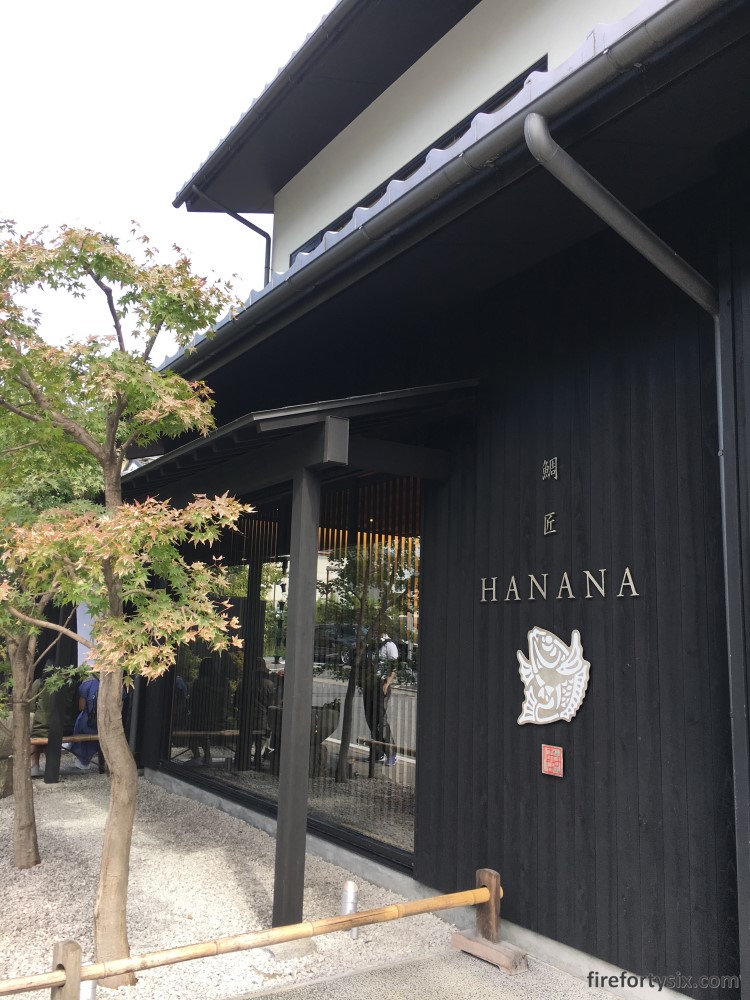
The dish that almost everyone ordered was the Tai Chazuke Gozen. The lunch set consists of a tofu appetiser, seasonal steamed vegetables, rice, pickles, dessert and the star attraction — sea bream sashimi swimming in sesame sauce.
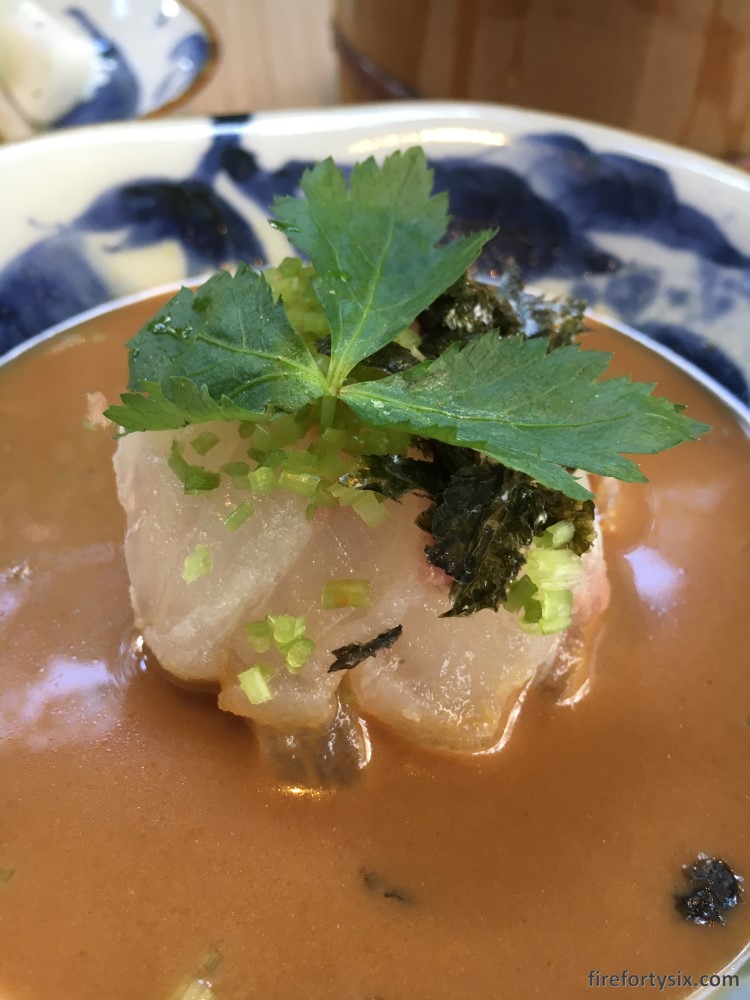
Similar to unagi hitsumabushi, there is a suggested approach of eating the dish in order to maximise your satisfaction.
First, eat the sashimi with the sesame sauce. Next, place some of the marinated fish on the rice and have it like a donburi. Finally, repeat step two but pour in some tea and enjoy the porridge-like mixture.
The three different ways provide three different tastes and textures, allowing you to experience three separate dishes just by combining the simple components of rice, raw fish, sesame sauce and tea.


We tried ordering additional portions of the sea bream sashimi but were politely but firmly rejected. The Japanese believe in not indulging in any particular item to maintain balance. Plus, if they didn’t stick to the allocated quota per person, I’m quite sure that they would run out of fish early every day.
The meal ended with some warabi mochi, a chewy jelly-like confection dusted with soybean powder. It usually comes with a drizzle of sweet kuromitsu syrup, but ours had a sprinkle of matcha powder.
Warabi mochi is fantastic. You can find it in most department stores and teahouses throughout Kyoto, and something that you must try. Repeatedly.
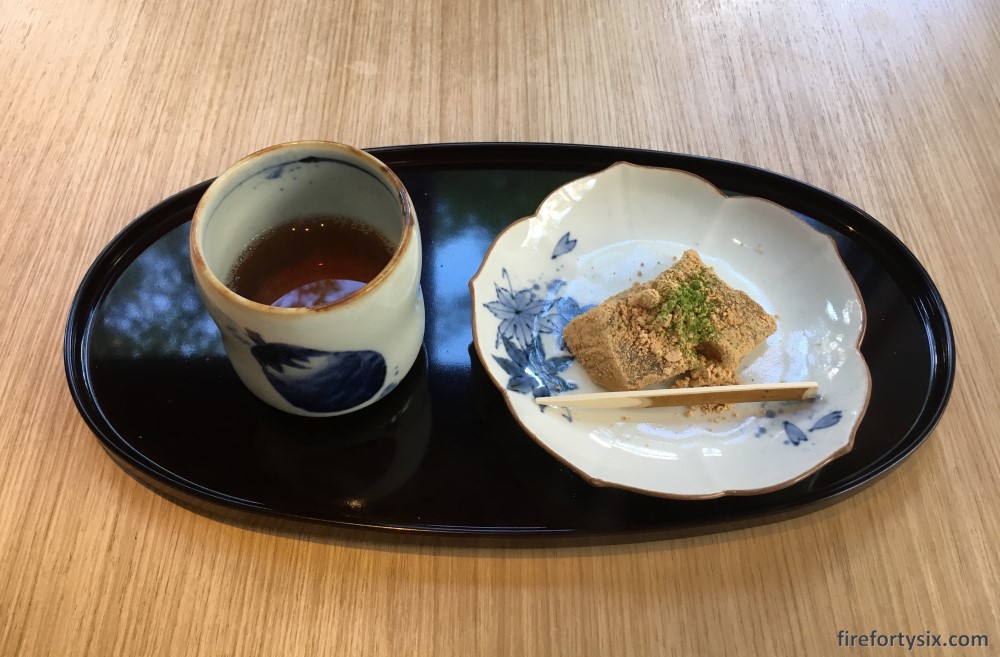
Tenryuji Temple and Togetsukyo Bridge
After lunch, we continued wandering around to enjoy the natural scenery of mountains, rivers and trees, …






… the many historical buildings scattered all over Arashiyama, including the famous Tenryuji Temple …


… and admire the view from the Togetsukyo Bridge, where boatmen park to drop off their customers.

The stretch between the Togetsukyo Bridge and Arashiyama Station and beyond is arguably the “downtown” area, with many restaurants and shops packed on both sides of the long road.
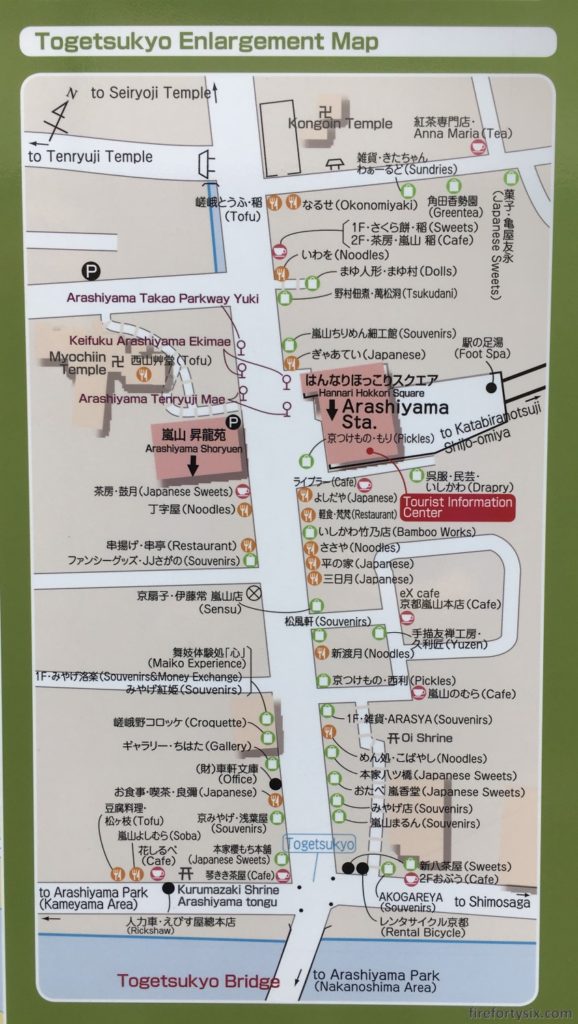
Kimono Forest
Connected to Arashiyama Station is the Kimono Forest, where vertical cylindrical columns are wrapped with various kimono prints and spread out to form a walking path, leading to a small shop that sells a large collection of music boxes.






Arashiyama Obuu
We were tired from all the walking, and decided to rest our feet and have some green tea desserts at Arashiyama Obuu, a small second-floor shop that offers a direct view of Mount Arashi, which the area is named after.
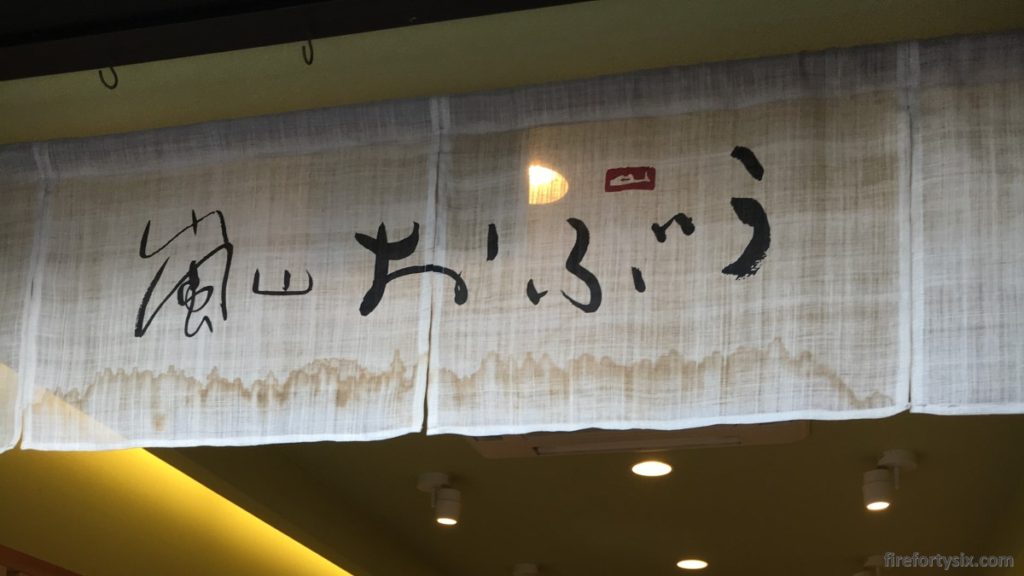
The coasters they use are simply too cute. You can punch out the red heart and then use the resulting hole to take selfies.


We ordered a matcha parfait and a bowl of matcha ice cream with jelly, red bean, shiratama and kuromitsu.
The matcha ice cream was rich and creamy and so much better than any that we’ve ever had. This is way… more superior to the generic tub of Haagen Daz that you can find in your supermarket.
It was not matcha-flavoured ice cream. It was matcha milked straight from the udders of cows that eat matcha leaves for breakfast, lunch and dinner and drink matcha for tea time. And then you use it to make ice cream.
The parfait takes it another step further by layering in the jelly, shiratama and kuromitsu with the best matcha pound cake you’ll ever have. It’s not just the slice that you see standing in the cup, but also cubes mixed into the ice cream which absorb the matcha essence as everything melts.
Once you have it, no other dessert will ever come close.


We left on a sugar high and explored the many souvenir shops along the street before taking a bus back to downtown Kyoto. The bus ride took almost twice the time of our train journey in the morning, so we’ll remember to stick to taking the train next time.
I suppose you could walk faster and spend just half a day in Arashiyama, but you’d miss the joy of wandering around aimlessly in this beautiful region of Kyoto. Don’t expect too much from the bamboo forest though, or maybe wait a few decades for the fallen bamboo to grow back.
But however long you decide to spend in Arashiyama, please make sure that you set aside enough time to have the magical matcha parfait at Obuu.
Eleven days in Osaka, Kobe and Kyoto
The world has changed forever due to that-which-must-not-be-named and international travel is on an indefinite pause. There are many countries we want to visit again and Japan is definitely among the top choices.
In the meantime, as we remain grounded in Singapore, we can look back and remember the wonderful time we had in our eleven days in Osaka, Kobe and Kyoto during the autumn of 2018, two years and a lifetime ago.
Paperback: www.amazon.com/dp/B08DC84GBD
eBook: www.amazon.com/dp/B08DD8P8W3
